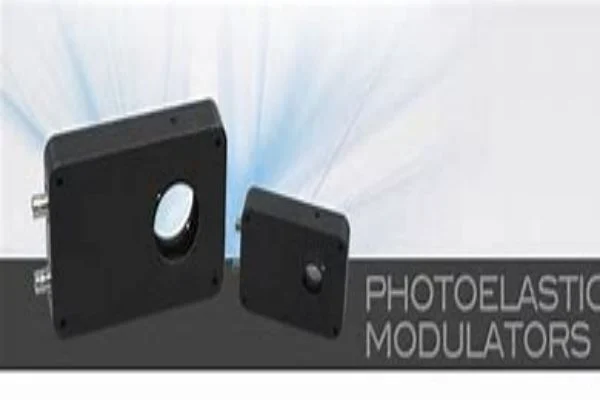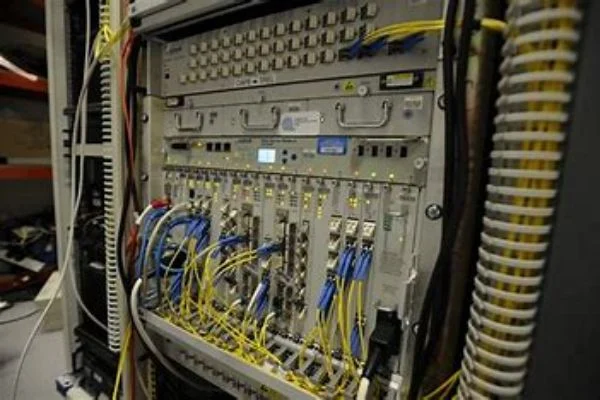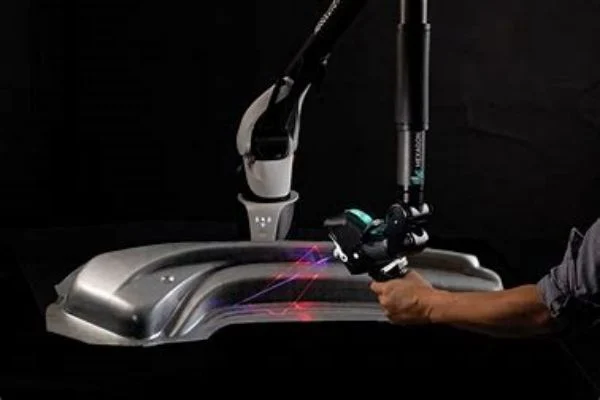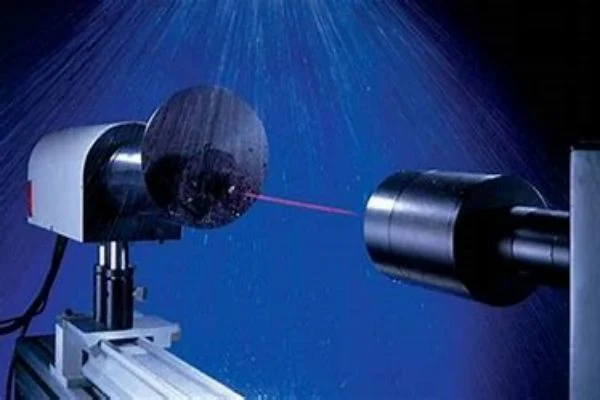Introduction
In the realm of photonics, acousto-optic and electro-optic devices play pivotal roles. These devices, leveraging the interaction between light and sound or electric fields, have revolutionized numerous applications, including laser beam steering, modulation, and signal processing. This article provides an in-depth comparison of these two technologies, shedding light on their unique characteristics, advantages, and potential applications.

Understanding Acousto-Optic Devices
Acousto-optic devices, often referred to as photoelastic modulators, are a cornerstone in the field of photonics, playing a crucial role in a multitude of applications. These devices operate based on the acousto-optic effect, an intriguing phenomenon where the refractive index of an optical medium undergoes a change in response to acoustic waves. This effect is a manifestation of the interaction between light and sound waves, a relationship that is harnessed to modulate and deflect light in a controlled manner.
The operation of acousto-optic devices is a fascinating process. When an acoustic wave is introduced into an optical medium, it creates a pressure variation, leading to a corresponding change in the refractive index of the medium. This variation in refractive index acts as a moving diffraction grating for an incident light beam. As the light beam interacts with this grating, it gets diffracted, resulting in a change in the direction of the light beam. By controlling the frequency of the acoustic wave, one can precisely control the angle of deflection, thereby achieving modulation of the light beam.
One of the standout features of acousto-optic devices is their rapid response times. The speed at which these devices can operate is primarily dictated by the speed of sound in the medium, which is significantly faster than the mechanical systems used in traditional optical devices. This high-speed operation allows acousto-optic devices to perform high-frequency operations, making them particularly useful in applications such as laser scanning and signal processing.

In addition to their speed, acousto-optic devices also offer excellent resolution. The ability to control the deflection angle with high precision makes these devices ideal for applications that require precise control over light. For instance, in laser beam steering, the direction of the laser beam needs to be controlled with high accuracy, a task that acousto-optic devices excel at.
Furthermore, the versatility of acousto-optic devices extends beyond beam steering and signal processing. They are also used in applications such as optical communication, where they serve as modulators to encode information onto light waves, and in spectroscopy, where they are used to control the frequency of light for spectral analysis.
In conclusion, acousto-optic devices, with their unique operation principle and advantageous features, have carved out a significant place for themselves in the field of photonics. Their ability to provide rapid response times and excellent resolution makes them a preferred choice for a variety of applications, ranging from laser beam steering to signal processing. As our understanding and technology continue to advance, it is expected that the capabilities and applications of acousto-optic devices will only continue to grow.

Delving into Electro-Optic Devices
Electro-optic devices represent another significant category in the field of photonics. These devices operate based on the electro-optic effect, a phenomenon where the optical properties of a medium are altered by an applied electric field. This change in optical properties, particularly the refractive index, enables the modulation of light, opening up a wide range of applications in photonics. Unlike acousto-optic devices that use sound waves to interact with light, electro-optic devices use electric fields, offering a different set of advantages. One of the most notable characteristics of electro-optic devices is their high-speed performance.
The speed of response of these devices is primarily determined by the speed at which the electric field can be changed, which can be significantly faster than the speed of sound used in acousto-optic devices. This high-speed operation makes electro-optic devices particularly useful in applications that require rapid modulation of light, such as high-speed communication systems. In addition to their speed, electro-optic devices also offer a broad bandwidth, low drive power, and exceptional linearity.
The broad bandwidth allows these devices to operate over a wide range of frequencies, making them versatile for various applications. The low drive power makes these devices energy-efficient, while the exceptional linearity ensures that the output response is directly proportional to the input, a critical requirement for many precision applications. In summary, electro-optic devices, with their unique operation principle and advantageous features, play a crucial role in the field of photonics, complementing the capabilities of acousto-optic devices.

Comparing Acousto-Optic and Electro-Optic Devices
While both acousto-optic and electro-optic devices serve similar purposes in the field of photonics, they exhibit significant differences in their operation, performance, and suitability for various applications. Acousto-optic devices, known for their rapid response times, excel in high-frequency operations, making them a preferred choice for applications that require precise control over light, such as laser beam steering and signal processing.
However, when it comes to speed, electro-optic devices outshine their acousto-optic counterparts. They boast an impressive performance in high-speed applications, thanks to their ability to rapidly change the electric field. Furthermore, electro-optic devices, with their low drive power and high linearity, are better suited for applications that demand high precision and efficiency. Therefore, the choice between acousto-optic and electro-optic devices ultimately depends on the specific requirements of the application at hand.
Applications in Laser Beam Steering
Laser beam steering is a critical application where both acousto-optic and electro-optic devices find significant use. However, the choice between these two technologies often hinges on the specific requirements of the application. Acousto-optic devices, with their excellent resolution, are particularly well-suited for applications that demand precise control over the direction of light beams.
This precision stems from the ability of these devices to modulate the angle of deflection by controlling the frequency of the acoustic wave. This makes acousto-optic devices an ideal choice for applications such as laser scanning and imaging, where the direction of the laser beam needs to be controlled with high accuracy.
On the other hand, electro-optic devices offer high-speed performance, making them suitable for applications that require rapid changes in the direction of light beams. The speed of these devices is primarily determined by the speed at which the electric field can be changed, which can be significantly faster than the speed of sound used in acousto-optic devices. This high-speed operation makes electro-optic devices particularly useful in applications such as laser communication and high-speed scanning, where the direction of the laser beam needs to be changed rapidly.
In conclusion, both acousto-optic and electro-optic devices play a crucial role in laser beam steering, each offering unique advantages. The choice between the two depends on the specific requirements of the application, whether it’s high precision or high-speed operation. As our understanding and technology continue to advance, these devices will undoubtedly continue to play a pivotal role in the field of laser beam steering.

Role in Modulation and Signal Processing
In the realm of modulation and signal processing, both acousto-optic and electro-optic devices play significant roles, each bringing unique advantages to the table. Acousto-optic devices, with their rapid response times, are particularly well-suited for high-frequency operations. This makes them an excellent choice for signal processing applications where speed is of the essence. For instance, in digital signal processing, the rapid modulation capabilities of acousto-optic devices allow for the efficient conversion of digital signals into analog signals. Furthermore, their high resolution makes them ideal for applications that require precise control over the modulation process.
On the other hand, electro-optic devices stand out with their broad bandwidth and low drive power. The broad bandwidth allows these devices to operate over a wide range of frequencies, making them versatile for various modulation applications. This wide operational range is particularly beneficial in telecommunications, where signals of different frequencies need to be modulated.
Additionally, the low drive power of electro-optic devices makes them energy-efficient, a critical factor in today’s energy-conscious world. Their exceptional linearity ensures that the output response is directly proportional to the input, a critical requirement for many precision applications. This high precision and efficiency make electro-optic devices a preferred choice for applications that demand high accuracy.
In conclusion, both acousto-optic and electro-optic devices offer unique advantages in modulation and signal processing. The choice between the two depends on the specific requirements of the application, whether it’s high-speed operation, precise control, broad bandwidth, or energy efficiency. As technology continues to advance, these devices will undoubtedly continue to play a pivotal role in the field of photonics.
Conclusion
In conclusion, both acousto-optic and electro-optic devices offer unique advantages and find extensive applications in photonics. The choice between the two depends on the specific requirements of the application, whether it’s high-speed performance, precise control, or high-frequency operation. As technology advances, these devices will continue to evolve, offering even more possibilities in the realm of photonics.
Frequently Asked Questions
- What are acousto-optic devices?
Acousto-optic devices utilize the acousto-optic effect to modulate and deflect light. - What are electro-optic devices?
Electro-optic devices exploit the electro-optic effect to modulate light. - How do acousto-optic and electro-optic devices differ?
They differ in their operation, performance, and application suitability. Acousto-optic devices excel in high-frequency operations, while electro-optic devices offer high-speed performance. - What is the role of these devices in laser beam steering?
Both devices are used in laser beam steering, with acousto-optic devices offering precise control and electro-optic devices providing high-speed performance. - How are these devices used in modulation and signal processing?
Acousto-optic devices are ideal for high-frequency signal processing, while electro-optic devices are well-suited for high-precision modulation.

Frank
Frank graduated from the University of Shanghai for Science and Technology, majoring in optics. As a technical engineer at Crylink Company, he deeply understands crystal materials and laser components.
Related Video(s) with this Article
Related Product(s) with this Article
Related Application(s) with this Article
